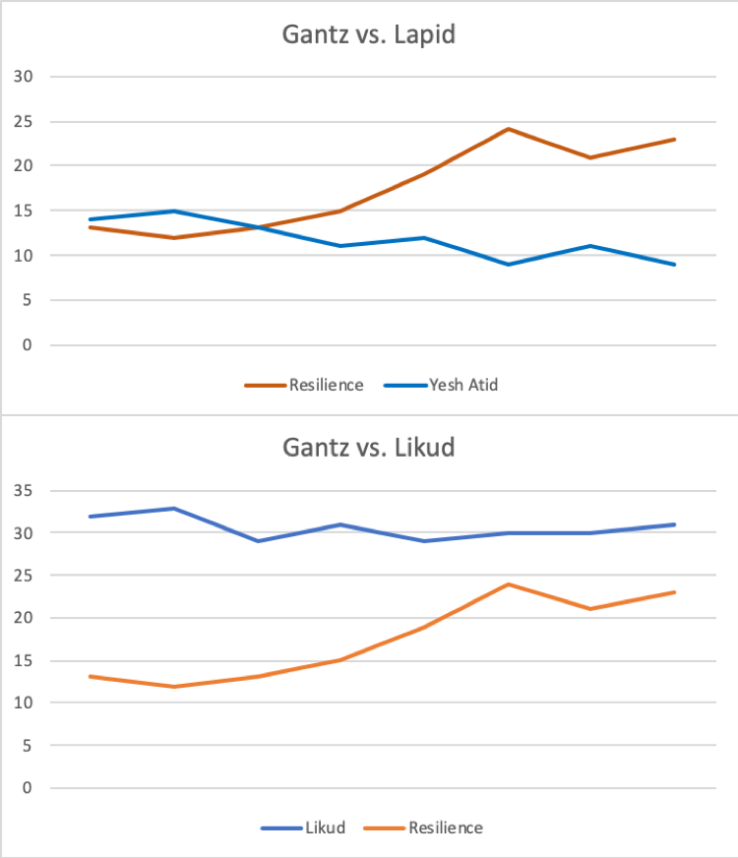
We call this format a Timesaver Guide to Israel’s Coming Elections. This will be a usual feature on Rosner’s Domain until April 9. We hope to make it short, factual, devoid of election hype, and of he-said-she-said no news, unimportant inside baseball gossip.
Bottom Line
For now, Benny Gantz is the alternative.
Main News
Gantz had a successful first appearance, and he is rising in polls.
His numbers improve mostly by taking from other parties in the center and left blocs.
Moshe Ya’alon is Gantz’ No. 2.
Many parties, including The Jewish Home, Kulanu, Israel Beiteinu, Shas, Gesher, Meretz, barely meet the electoral threshold.
Developments to Watch
Political: Gantz’ had a solid performance in his first speech. The boost in the polls was to be expected. The question is: Will it last. Another question is: how strong will he become. With nine seats less than Likud, Gantz will not get a chance to form a coalition.
Political: Gantz’ list is “white” – namely, too Ashkenazi. It is also manly – or, as some critics argued, chauvinistic. These two issues must be corrected, and soon.
Political: Leaders in all blocs, but especially on the right must pay attention to the electoral threshold. The Jewish Home, Shas, Israel Beiteinu, are all in danger (according to the polls). The right can end up throwing away more than 10 seats on parties that will not make it into the Knesset.
Personal: Yair Lapid is likely to be under pressure to team up with Gantz and thus give the centrist bloc a shot as winning the election. For now, he stands firm against such pressure. He wants to be Prime Minister, not Gantz’ second in command.
Personal: Livni is still under water. Ehud Barak not likely to make a comeback. Ashkenazi, another former General, is still undecided.
What’s the Race About
Is Gantz for real, or just having his moment in the sun.
Possible Wild Cards:
More parties sinking under water.
Gantz’-Lapid merger (could end up having as many as 35 seats according to some polls).
Security crisis.
The Blocs and Their Meaning
The rise of Gantz can be meaningful in three ways.
- If it convinces other centrist parties and their voters that he is the real player that ought to be supported.
- If it gets him close enough to the numbers of Likud, and make the possibility of him getting a first chance at forming a coalition realistic.
- If the bloc of right-religious parties loses ground (and seats).
For now, none of this happened. Gantz is not dominant enough to make Lapid join him (he might succeed with Gesher). He is still far from Likud (average 8 seats less). The right-religious bloc still has an edge. Take a look at the graph. It shows the average of how the blocs did before and after the rise of Gantz. As you can see, most of what Gantz gained comes from his own bloc (center) or from the left.

Still, we do not want to underestimate Gantz’ achievement. In close election, and when many parties barely scratch the electoral threshold, every seat counts, and Netanyahu’s coalition of 67 (before Lieberman’s departure) is loosing seats. The parties that made this coalition currently get around 63 seats. As you can see, most of this change happened before Gantz’ rise.

Focus on One Party
Gantz, in the 4 polls before and the 4 polls after vs. Lapid before and after. Gantz, in the 4 polls before and the 4 polls after vs. Likud before and after. As you can see: Gantz must worry Likud, but to Lapid he is a more immediate threat.























 More news and opinions than at a Shabbat dinner, right in your inbox.
More news and opinions than at a Shabbat dinner, right in your inbox.